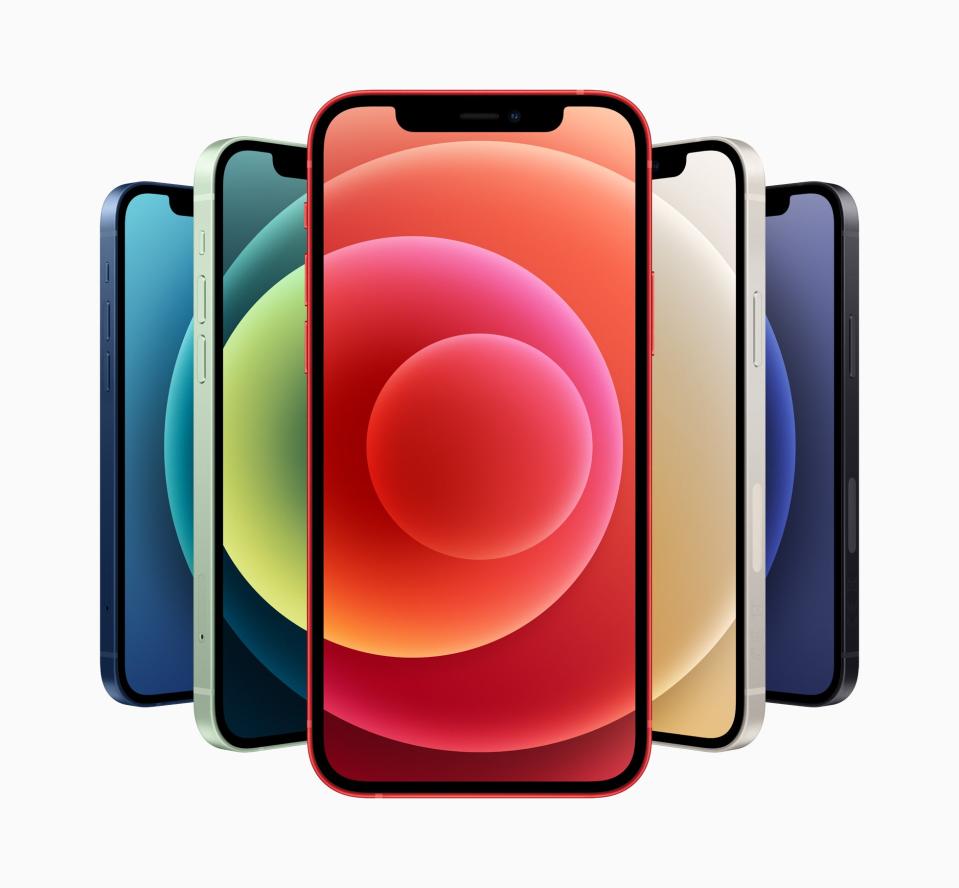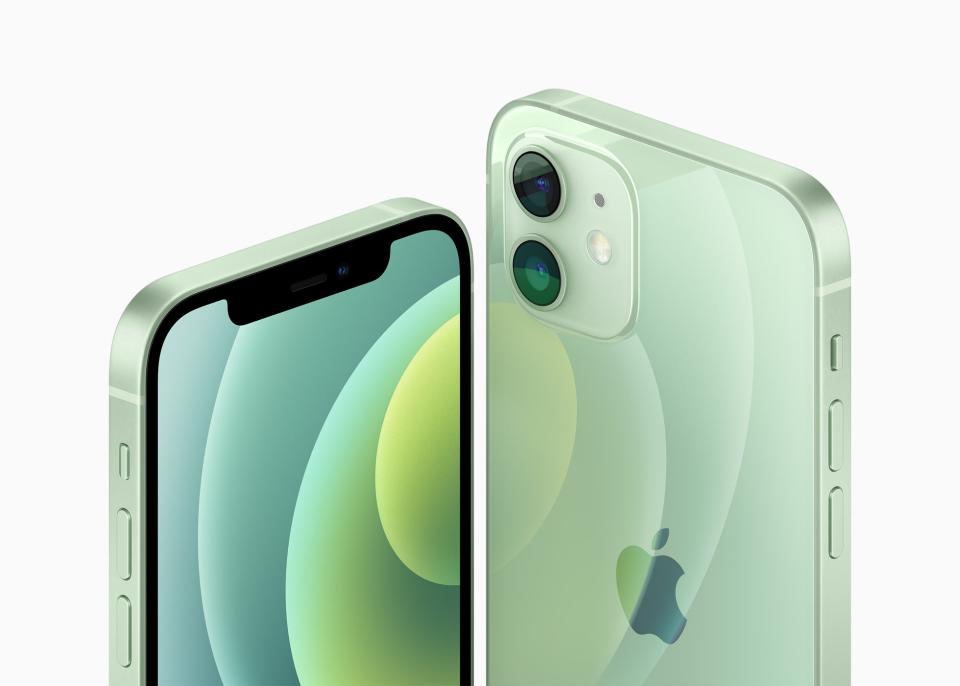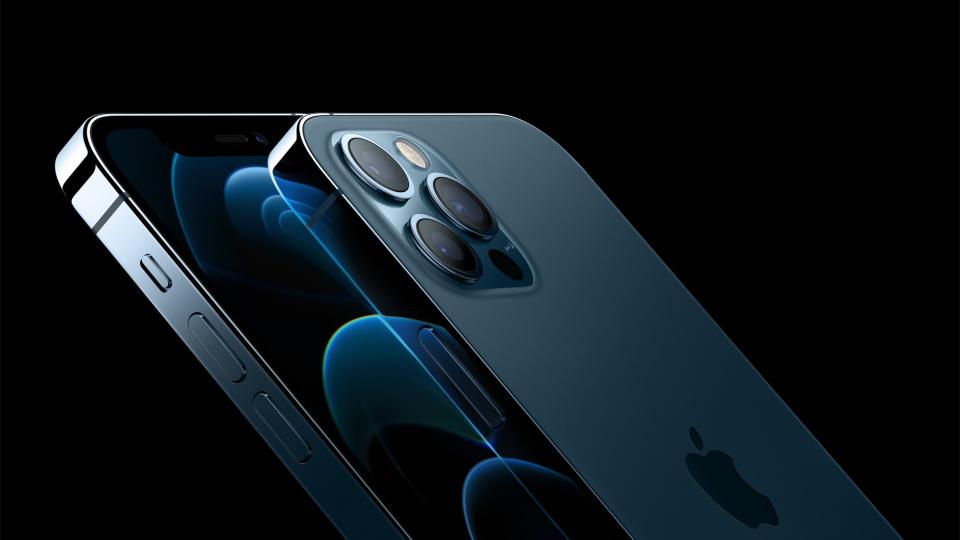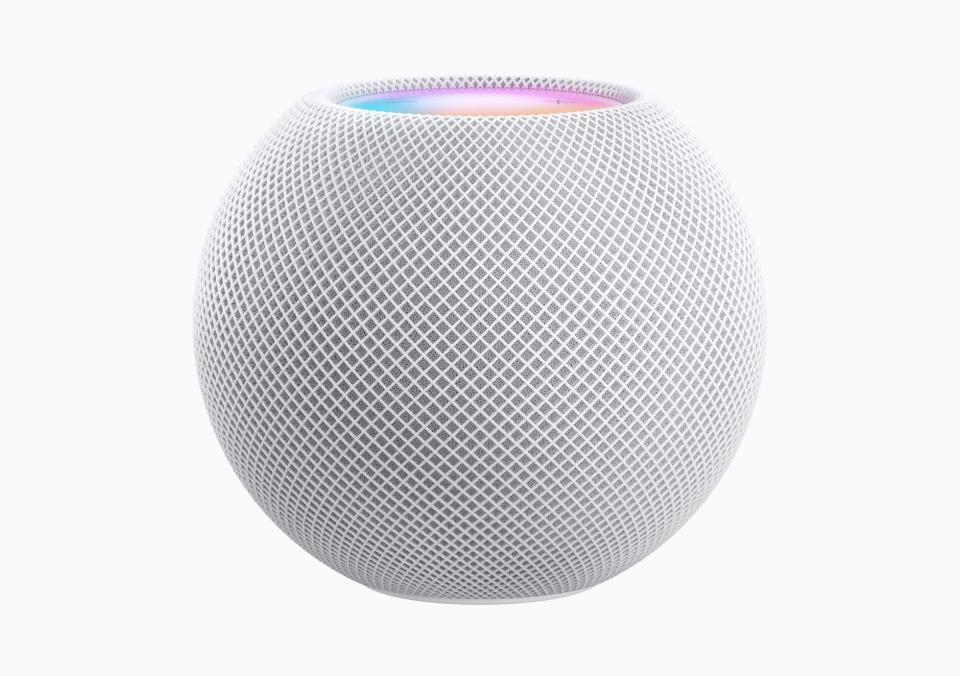The New Apple iPhone 12 Is Here, and This Is What’s Worth Knowing
Today the stars aligned to destroy your wallet: it’s both Amazon Prime Day and Apple iPhone Day, delivering unto us the new Apple iPhone 12. Well, 12s, plural. There are a bunch. The design’s changed. And 5G has finally arrived, much to everyone’s confusion. Let’s dive in.
There Are 4 Apple iPhone 12 Models
iPhone oldheads will recognize the iPhone 12's “new” look, which brings back the squared-off metal frame that debuted on the 2010 iPhone 4—only this time, the glass is flush inside the metal belt. Apple says the glass on the iPhone 12 line is four times more drop-resistant than the 11's, but feel free not to test that yourself.

iPhone 12
The all-arounder we know and love. Inside the aluminum frame, the 6.1-inch screen on the 12—on the entire iPhone 12 range, in fact—is now an OLED, which means it looks better than the old one. The two rear cameras (regular and ultra-wide) and the front-facing selfie camera now all have Night Mode. The iPhone 12 comes in 5 colors: black, white, red, blue, and green. Starts at $800. Pre-orders open up this Friday, October 16th, and it’ll start shipping October 23rd.

iPhone 12 mini
The mini (yes, Apple styles it with a lowercase ‘m’) is the baby of the family, with an aluminum frame wrapped around a 5.4-inch screen. That screen is larger than the 4.7-inch screen on the recently released iPhone SE, but the mini has a smaller overall body. (All hail the return of the small phone!) Technologically, it’s exactly the same as the bigger 12, just tinier, and $100 cheaper. Starts at $700. Pre-orders start November 6th, and shipping starts November 13th.
iPhone 12 Pro
Same 6.1-inch screen as the regular-fit iPhone 12, but the Pro (and Pro Max) get a surgical steel frame and more horsepower. There’s increased memory capacity: the Pro maxes out at 512GB of memory, where the Mini and 12 are capped at 256. The story with the Pro and Pro Max (below) are the upgraded cameras. There are still three lenses on the back —regular, ultra-wide angle, and a new 4x telephoto sensor—plus the selfie-cam sensor on the front, but they’ve all got some very geeky photo and video powers. The Pro and Pro Max can shoot video in HDR (which boosts the vibrancy and tonal range with the help of some math), including Dolby Vision HDR—and have the chips to handle on-the-fly editing of what will be massive files. Also the new LiDAR tech allows for prettier Portrait Mode portraits, faster autofocus in low light, and better 3D mapping in AR. If any of that makes sense to you, then congrats—you’re exactly who the Pro models were meant for.
You can get the Pro in four colors: gold, silver, graphite, and blue. Starts at $1,000. Pre-orders start on October 16th, shipping starts October 23rd.
iPhone 12 Pro Max
The Bryson DeChambeau of the iPhone 12 line. A 6.7-inch screen (which is a bit larger than the current iPhone 11 Pro Max’s screen) is one key differentiating factor from the iPhone 12 Pro. The other: its cameras have slightly larger sensors for improved photo and video quality. Comes in the same four colors as the Pro. Starts at $1,100. And you’ll have to wait longer: pre-orders start November 6th, and shipping starts November 13th.

The iPhone 12 Gets 5G! What’s 5G!
You implicitly know that 5G is better than 4G because it has one extra G. But what’s a single G worth when it comes to a mobile phone network? Theoretically, 100 times more data throughput, making downloads and uploads faster, streaming video and video calls more stable, and unlocking more data-intensive uses like streaming video games and 4K videos on the go. All iPhone 12 models support both versions of 5G, and Apple says it’s seen up to 3.5 gigabytes per second under “ideal conditions.” Reality dampens the hype a tad: though the four major mobile networks have already started rolling out their 5G networks, they’re neither comprehensive nor optimized. (As part of the iPhone 12 launch, Apple announced that Verizon is expanding its 5G coverage nationwide-ish to cover 55 cities…and 43 stadiums.)
In other words, having a 5G iPhone 12 doesn’t guarantee you’ll always—or ever—be on 5G, or that you’ll get the full speed bump when you are. But your 5G iPhone will still work on 4G, and just as importantly, it’s future-proofed for when coverage expands.
Apple Knows How Magnets Work
![[whispers to self] click](https://s.yimg.com/ny/api/res/1.2/Gz.XrPk7Lr_j7VTgB.4pEg--/YXBwaWQ9aGlnaGxhbmRlcjt3PTk2MDtoPTU0MA--/https://media.zenfs.com/en/gq_402/567acaaae03f6a7fb5fee73f6edc1fdf)
The new MagSafe feature across the iPhone 12 line means that wireless chargers now magnetically snap onto the back of the iPhone with what appears to be a satisfying click. Magnet-endowed accessories, like card wallets, will be able to snap on as well. Anyone who’s woken up to a dead phone because they didn’t place it just right on a wireless charging puck will appreciate the certainty of MagSafe. Apple (and presumably licensed third party cases) will include the integrated magnet that makes it all possible. That said, Apple won’t be including a MagSafe wireless charging cable in the box. Speaking of what’s in the box...
Apple Giveth and Apple Taketh Away
iPhone 12 buyers will no longer receive the Lightning headphones or the small rectangular USB wall plug in the box, with Apple explaining that because so many people already have both, it’s environmentally irresponsible to continue shipping them. (Of course, it's cheaper for them, too.) What you do get in the iPhone 12 box, at least, is a mildly upgraded Lightning cable that is now USB-C on the adapter end, allowing for faster charging. The old square USB-A format is slowly but surely going the way of the floppy disk, so now you’ll have at least one cord that doesn’t require a dongle to use with your MacBook.
One More Thing: There’s Now a HomePod Mini

Apple’s HomePod Mini (uppercase ‘M’) is the company’s first new smart speaker since it launched the imperfect HomePod in 2018. (It was overpriced at $350, locked into Apple Music, and left weird rings onto people’s furniture.) The HomePod Mini mirrors the new Amazon Echo Dot’s mesh-wrapped globular design, with a slice across the top to showcase the swirling Siri waveform and volume controls. Apple says the Mini features “computational audio,” which will adjust the tuning of your music up to 180 times per second. It will also perform some nifty functions when your iPhone gets close to a speaker, like automatically pulling up speaker controls. Maybe the most mind-blowing spec: the Apple HomePod Mini only costs $99, a wildly affordable price point for Apple. 2020 continues to shock.
Originally Appeared on GQ

